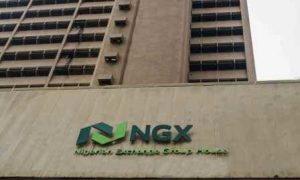It is standard procedure to respond to all enquiries promptly; providing all the information required. But should you stop there?
Many business people see follow-up as a ‘thank you note’ after a transaction is completed. This is a mistake. Follow-up goes beyond that. Once a person has signified interest in your product or services you must keep a tab on him or her. Ensuring that no prospect slips from your grasp would add to your bottom line.
The good thing about prospects is that when they have a good impression about you they do not only buy (now or later) they also tell other people about you. The bad thing about prospects is that they tend to forget you. Like you, they have other things to attend to. Besides follow-up is your job not theirs.
So here are some tips on effective follow-up strategies:
Be organised
To have an effective follow-up system you must have an organised record keeping system. If you cannot go all out to build a database then open an excel sheet, access or use your outlook. It’s a good idea to categorise your prospects and the information you intend to send to them. You must ensure that you have useful information for them concerning the product or services.
Souvenirs
Sending out season’s greetings is a good idea and you would do well to send out branded souvenirs as well. Be very choosy about souvenirs; it has to be a useful item that gets plenty of visibility. For instance, calendars are better than buckets, and notepads are better than handkerchiefs.
Keep the costs down
As enquires come in, the list of prospects would grow and the follow-up never ends even after the first transaction. Therefore you must keep follow-up costs down. One way to do this is by using internet correspondence. Send out beautiful e-cards and branded e-mails. Get your prospect on to your social media platforms to receive online notifications; get them to like your facebook pages, follow you on twitter, and add you as a friend on myspace. There is also linkedin and instagram. Creativity is an asset here but do not sacrifice simplicity at its altar. The overall aim is to get one message across: Do business with us. It would save you a lot of money in advertising.
Another way is to be prudent with the souvenirs albeit maintaining your (quality) standard. You are better off sending out one prized souvenir than a goodie bag with many little ones. You would pretty much make the same impression and branding up the bag itself would also cost you some cash. For instance, it is more cost effective to send out a medium sized diary in a neatly branded envelope than a bag containing a flask, mug, pen, and letter opener. None of the latter items can carry details of your business and even if they did very few people would notice.
Timing
Seasonal greetings must be planned way ahead of time so you must have a timetable for the year with all the seasons and celebrations (religious and other wise). Some souvenirs are time sensitive as well; like calendars and diaries. The time of the day is also a factor. New Year’s Day greetings are best at mid-night while Christmas day greetings are best by noon – Christians would be back from Christmas Day church service.
Focus on the Individual
If you use a list system for your follow-up, chances are that you only send out correspondence when there is major news about the product or services you offer. The list system is about building a mailing list with a bulk e-mail mentality. The same does for building a mobile number list with a bulk SMS mentality. These methods should not be used as routine follow-up despite the fact that general information would be sent out occasionally.
Following up every lead individually is far more effective. Use a method that records your correspondence history with each prospect as well as their personal information. A prospect that has signified interest in wholesale purchases is not likely to be interested in the ‘big’ news about your new retail outlet. Your excel sheet would have columns with short correspondence records per prospect to give you background information at a glance.
Intervals
Make contact at set intervals. Use carefully pre-written messages. The intervals must be carefully chosen to ensure that they are not too long, too short or too rigid as things would come up outside your time table.
The Messages
Take your time to develop your follow-up messages. The first letter/message which is sent immediately the request is made should be informative and catchy. The following letters would be slightly more detailed. Below are a few Dos:
- Always keep it brief.
- Always stress the benefits of your product.
- Always include a link (e.g. a website, blog, social media page etc) where the prospect can get further information.
- Always include your contact details: e-mails, postal address, office address, office phone lines and direct lines.
- Always have your trademark on every correspondence; online or paper mail. People generally remember signs and colours faster than names.
- Always include your (personal) name. People connect better with other people.
- Always refer to the previous mail in the letter. Here is an example: “… you expressed concern about the delivery arrangements in your e-mail last week, I hope my response helped to erase those fears. Well I have even better news for you. We have engaged another courier company which is located in your area and is familiar with the topography and road network.”
- Always write in a way that any reader can skim through the letter and get your message clearly. Write for a busy-reader not a leisure-reader.
- Always create a sense of urgency in the mind of the reader. Give the prospect reasons to order now. Special offers and freebies are very useful for this purpose. E.g. 10 days to go. Register now!
Freebies and special offers
Ensure the freebies are related to your products or services. For instance GSM networks give out handsets that are configured to their network so winners would buy its recharge cards.
Generally all bonanzas are announced but when a bonanza runs for months, you begin to sound like a broken record. There are ways around it:
- Use a post script (PS): After the letter use a PS; then state the information plainly.
- Use fine print: State the information in fine print at the base of the message.
- Use a seal: Insert a disc seal and post your bonanza details in it, but you would have to use a few words.
- Use the header: State the information in smaller print under the header – under your logo.
Questions
When you ask a reader a question, the reader would subconsciously ask himself/herself that question. For example:
- “ … Free blackberry handsets up for grabs! What are you waiting for?”
- “… Get 50% discounts. Only two days to go! Have you placed your order?”
Feedback
Establish a follow-up method that encourages feedback and urges the prospect to respond. For instance, in a letter ask questions that elicit feedback. The aim is to engage the prospect; so do not ask a closed question (a yes/no question). Do not ask “Did you receive my last e-mail?” Ask: “What further information did you think was lacking in my last e-mail?”
Feedback can also be comments on websites, blogs or social media. Feedback help you rate and group your prospects.
You can create whatever category best suits your business.
Follow-up is always worth the effort and multiplies your profit when you do it right. Best of all, unlike other strategies, the rewards are instant. You would also find that the database and feedback is priceless to your business.



























